This is an aircraft specially designed for Artificial Intelligence (AI). But it can also be piloted manually.
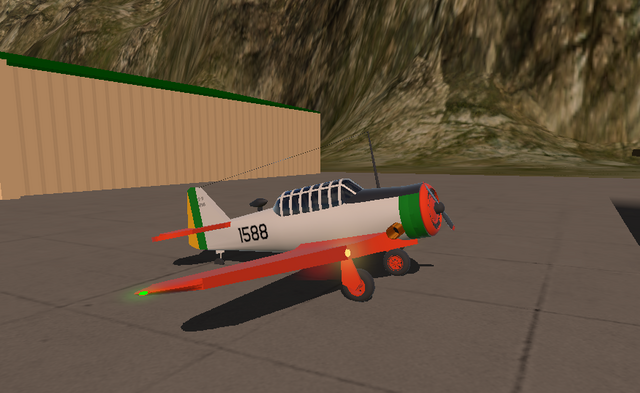
Descrition:
The North American T-6 is a single-engine aircraft with conventional landing gear and a retractable tail wheel. This model is currently intended for the instruction and training of pilots and has also been used in combat in various scenarios such as the Second World War, the Korean War and, more recently, the Portuguese Overseas War.
'Wikipedia'
History:
The North American AT-6 (original designation, changed after the 2nd war to T-6) was the winner, in 1937, of a competition between the great North American manufacturers, aiming at choosing a new combat trainer for the Air Force. Aerial. It was basically a North American BT-9 (with fixed gear and 400 HP engine), re-equipped with a 600 HP Pratt & Whitney "Wasp" engine, and modified for retractable gear. Then designated BC-1 and equipped with light armament, the plane was a complete success, receiving designation SNJ in the version for the Navy. In 1940, his improved model BC-1A received the military designation AT-6, for "Advanced Trainer" (SNJ-3 for the Navy). Total AT-6 production reached 15,649 units, the last of which was manufactured in 1954 in Canada. Of this total, 81 were assembled in Brazil by the Fábrica de Aviões de Lagoa Santa/MG, between 1945 and 1952, a good part of them with a high degree of nationalization. In Brazil, the FAB's T-6s were only decommissioned in 1974 (in the Fumaça Squadron they were used until 1976), gradually replaced by the Neiva Universal. Today, of the 150 that flew in the FAB in 1973, only six T-6s still operate regularly with a civil prefix.
Gallery:
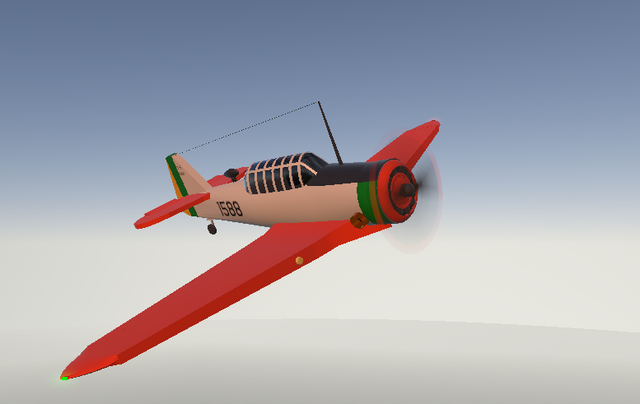
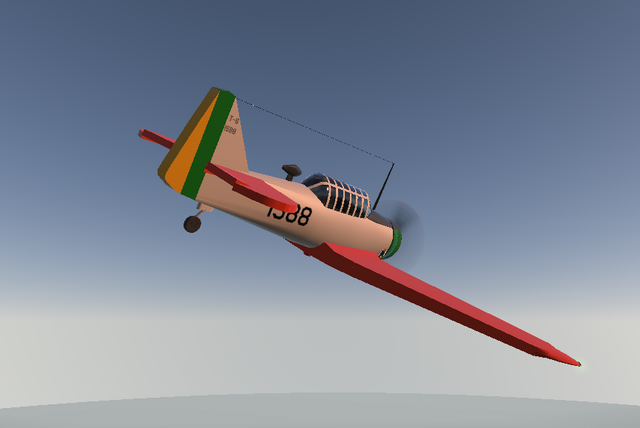
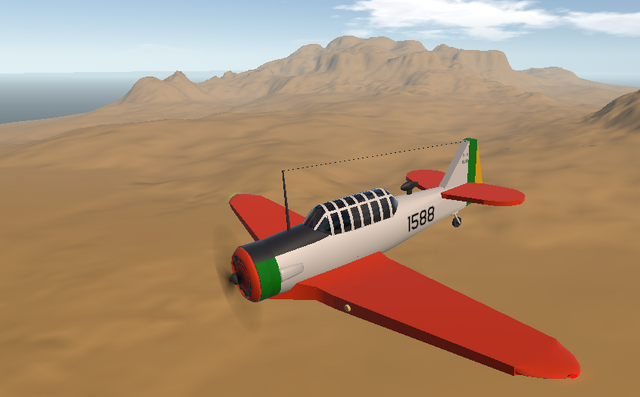
Reference Photos
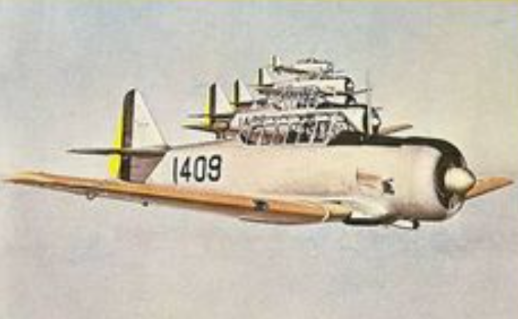
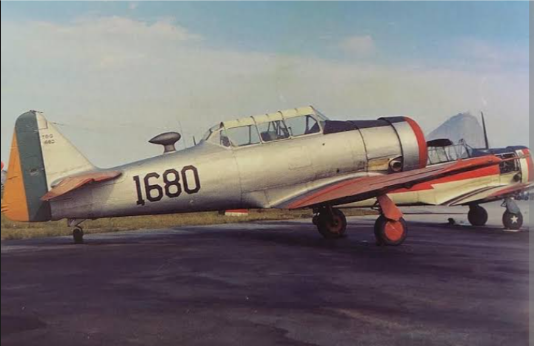
Credits: Wikipedia / Poder Aéreo / Pinterest
Thank you for your attention.
Variant:
Specifications
Spotlights
- SyntheticL 2.3 years ago
- WINGSIRONAVIATION 2.3 years ago
- DARZAVIATION 2.3 years ago
General Characteristics
- Predecessor Aircraft
- Successors 2 airplane(s) +204 bonus
- Created On Android
- Wingspan 63.1ft (19.2m)
- Length 41.9ft (12.8m)
- Height 19.8ft (6.0m)
- Empty Weight 7,849lbs (3,560kg)
- Loaded Weight 11,940lbs (5,416kg)
Performance
- Horse Power/Weight Ratio 0.133
- Wing Loading 26.2lbs/ft2 (128.1kg/m2)
- Wing Area 455.2ft2 (42.3m2)
- Drag Points 3678
Parts
- Number of Parts 90
- Control Surfaces 4
- Performance Cost 429

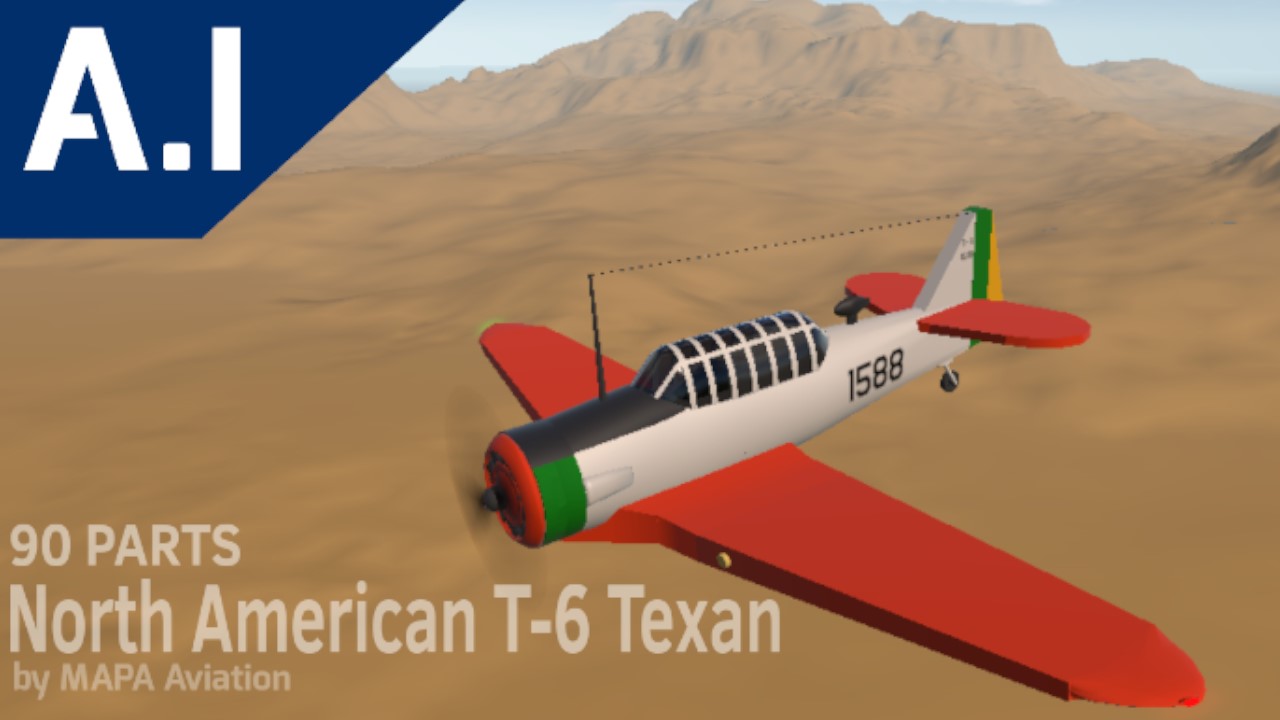
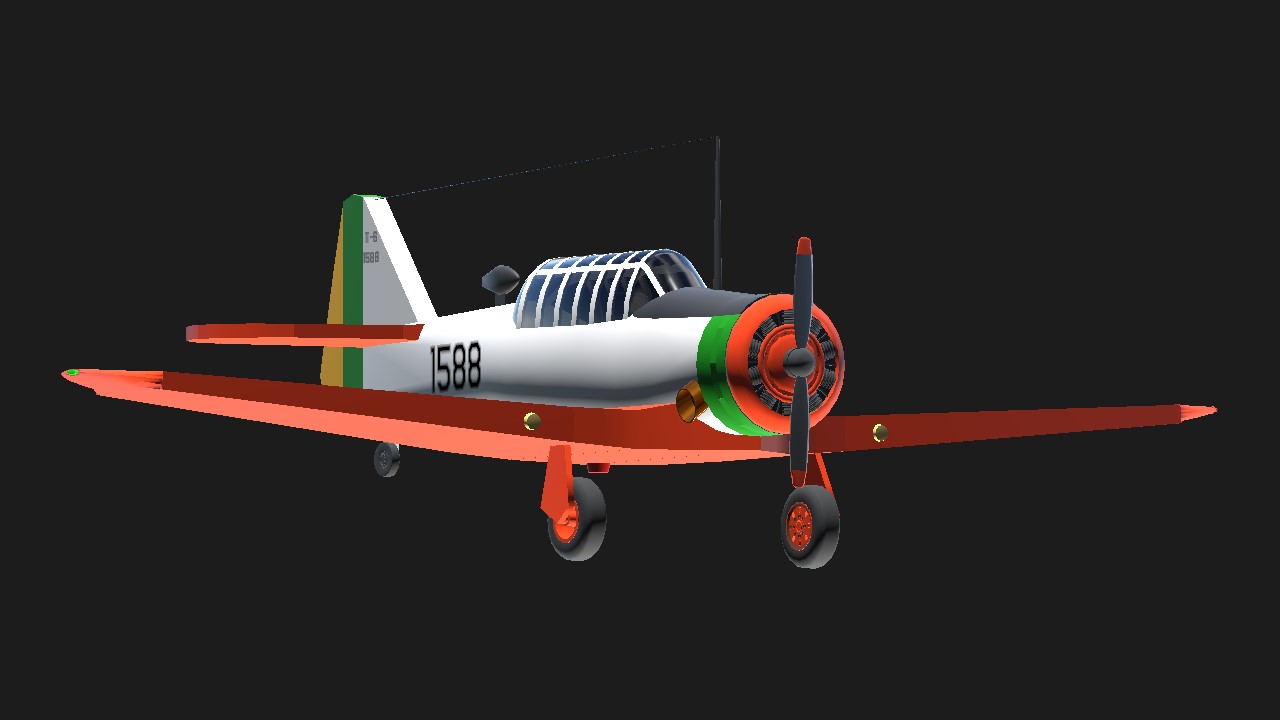

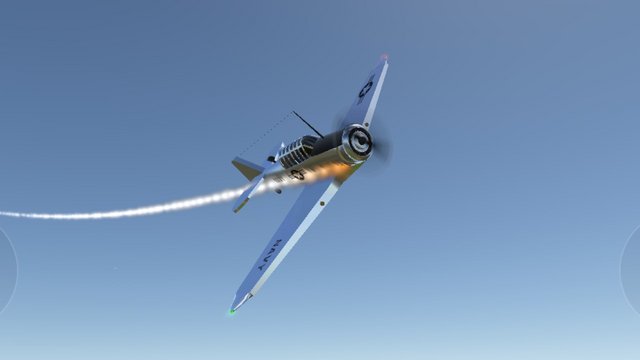

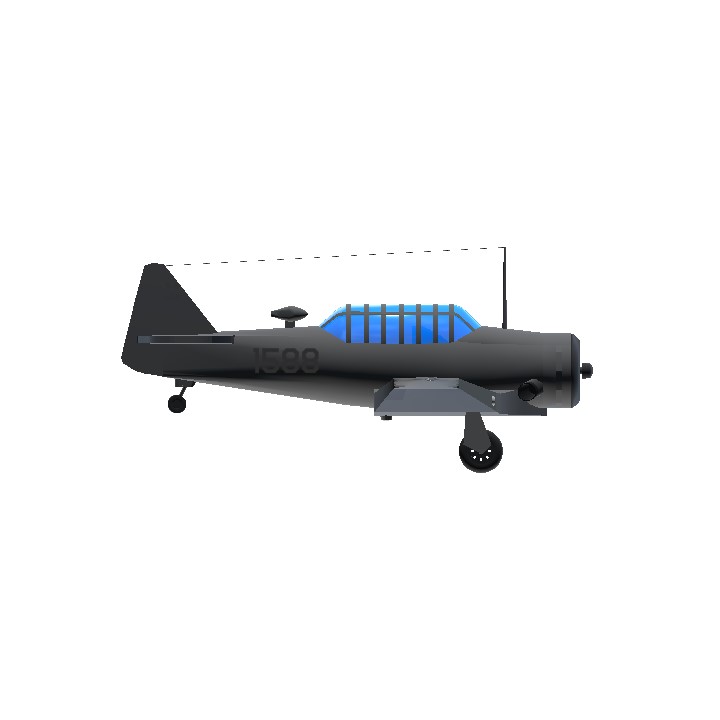

GOOOOOOOOOOOOODDDD#MOREINNNNNN #unknown country
@Gabriel747 ¿que es un então?
lo siento, mi español cuando yo escribiera es horrible.
@MAPA vou falar com ele então
@Gabriel747 infelizmente nem eu sei como faz isso, mais o @OPaiTaOn pode te dar dicas de como fazer linhas acrobaticas coloridas usando imãs
@MAPA você sabe fazer uma trilha de fumaça para aviões se sim me ensine estou fazendo uma versão acrobática do seu T-6 só que não sei fazer trilha de fumaça
@botto28 Thank you :)
Lindo T6 parabens
Que lindo caraaaa
@MAPA Im great 👍
@Bo1233 I'm fine, thanks for your concern, and are you okay?
How are you friend?
@FunkyTreePedro claro, todos tem liberdade de fazer o que quiser
@MAPA eu posso fazer um avião para ai
também?
@Rato2220 desculpe, eu não trabalho com aeronaves armadas. Confira este AMX A-1 de @botto28
Faz um AMX
You use FAB colors
@Aarav ok :)
Imagine I gave you a spotlight ok?
this is so cool
@SyntheticL @Alvin8 @Turbo18 thank you :D
Nice trainer plane
@MAPA nice trainer!
@OPaiTaOn a IA é bastante limitada, ela tolera no máximo 96 Parts e 6 Asas/Painel de Asa , e precisa ser uma aeronave bastante ágil em manobrar para ser gerado automaticamente. Estes são os requisitos fundamentais não há segredo e nem truque XML, levou 4 anos para eu descobrir isso
@MAPA eu digo a diferença estrutural e em xml pq quando eu tento fazer coisas para serem usadas por AI elas fica tudo bugada
@PapaKernels @AuroraPlanes thanks :D